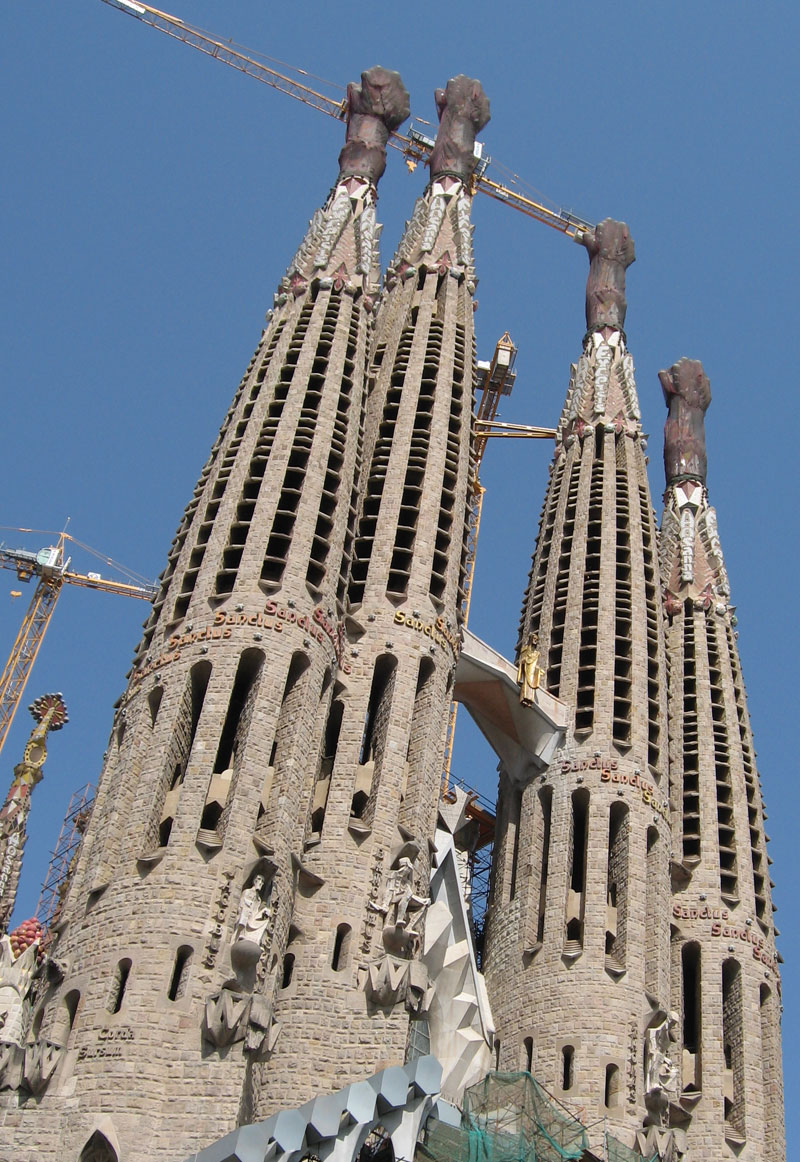 La Sagrada Família (Catalan, ‘The Holy Family’) is a large Roman Catholic basilica under construction in Barcelona, Catalonia, Spain. Its formal title is Temple Expiatori de la Sagrada Família. Antoni Gaudí worked on the project for over 40 years, devoting the last 15 years of his life entirely to this endeavour. On the subject of the extremely long construction period, Gaudí is said to have joked, “My client is not in a hurry.” After Gaudí‘s death in 1926, work continued under the direction of Domènech Sugranyes until interrupted by the Spanish Civil War in 1935.
La Sagrada Família (Catalan, ‘The Holy Family’) is a large Roman Catholic basilica under construction in Barcelona, Catalonia, Spain. Its formal title is Temple Expiatori de la Sagrada Família. Antoni Gaudí worked on the project for over 40 years, devoting the last 15 years of his life entirely to this endeavour. On the subject of the extremely long construction period, Gaudí is said to have joked, “My client is not in a hurry.” After Gaudí‘s death in 1926, work continued under the direction of Domènech Sugranyes until interrupted by the Spanish Civil War in 1935.
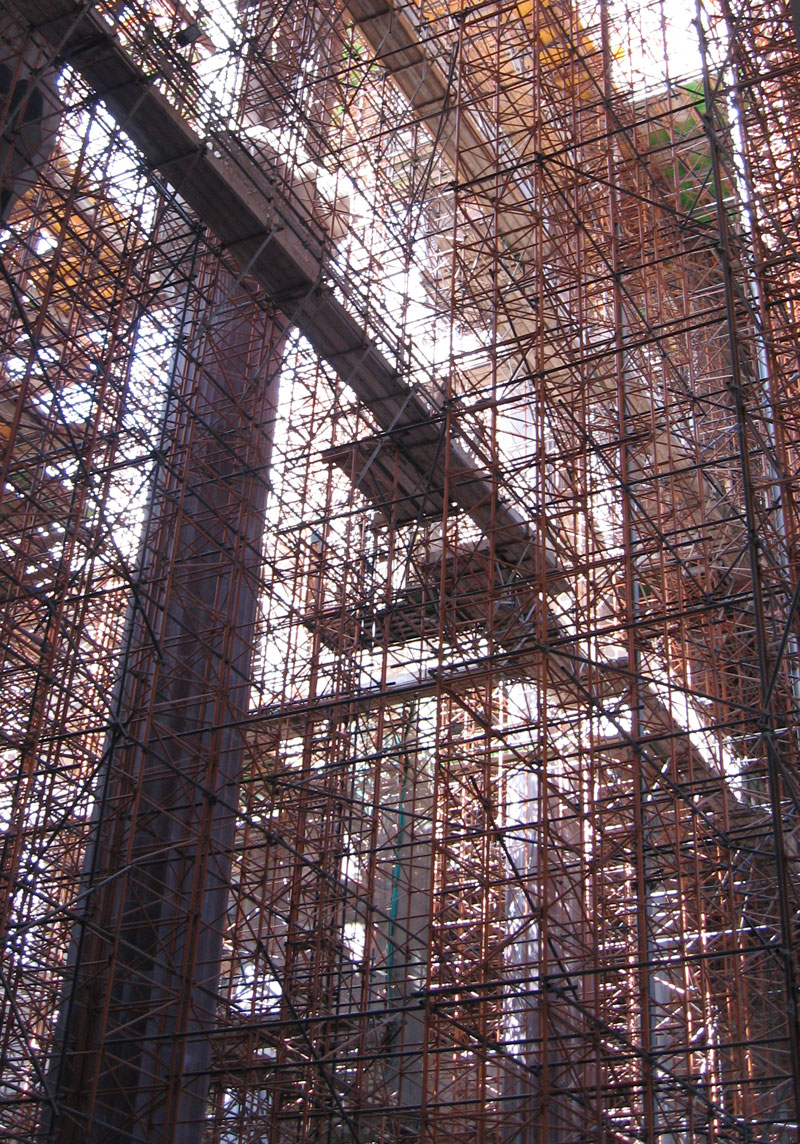 Parts of the unfinished building and Gaudí‘s models and workshop were destroyed during the war by Catalan anarchists. The design, as now being constructed, is based both on reconstructed versions of the lost plans and on modern adaptations. Since 1940 the architects Francesc Quintana, Isidre Puig Boada, Lluís Bonet i Gari and Francesc Cardoner have carried on the work. The current director and son of Lluís Bonet, Jordi Bonet i Armengol, has been introducing computers into the design and construction process since the 1980s. Sculptures by J. Busquets, Etsuro Sotoo and the controversial Josep Subirachs decorate the fantastical façades.
Parts of the unfinished building and Gaudí‘s models and workshop were destroyed during the war by Catalan anarchists. The design, as now being constructed, is based both on reconstructed versions of the lost plans and on modern adaptations. Since 1940 the architects Francesc Quintana, Isidre Puig Boada, Lluís Bonet i Gari and Francesc Cardoner have carried on the work. The current director and son of Lluís Bonet, Jordi Bonet i Armengol, has been introducing computers into the design and construction process since the 1980s. Sculptures by J. Busquets, Etsuro Sotoo and the controversial Josep Subirachs decorate the fantastical façades.
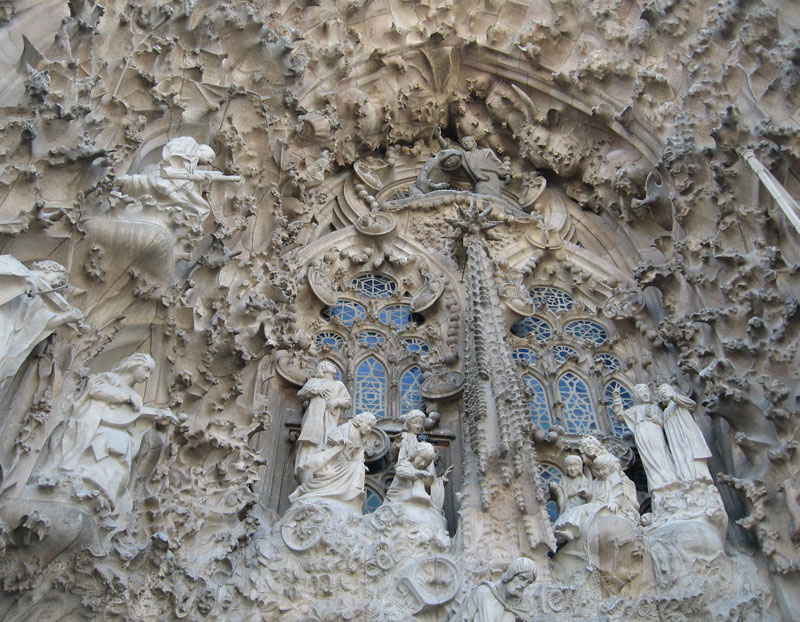 According to the newspaper El Periódico de Catalunya, 2.26 million people visited the partially built basilica in 2004, making it one of the most popular attractions in Spain, alongside the Museo del Prado and Alhambra. The central nave vaulting was completed in 2000 and the main tasks since then have been the construction of the transept vaults and apse. Current work (2006) concentrates on the crossing and supporting structure for the main tower of Jesus Christ as well as the southern enclosure of the central nave which will become the Glory façade.
According to the newspaper El Periódico de Catalunya, 2.26 million people visited the partially built basilica in 2004, making it one of the most popular attractions in Spain, alongside the Museo del Prado and Alhambra. The central nave vaulting was completed in 2000 and the main tasks since then have been the construction of the transept vaults and apse. Current work (2006) concentrates on the crossing and supporting structure for the main tower of Jesus Christ as well as the southern enclosure of the central nave which will become the Glory façade.
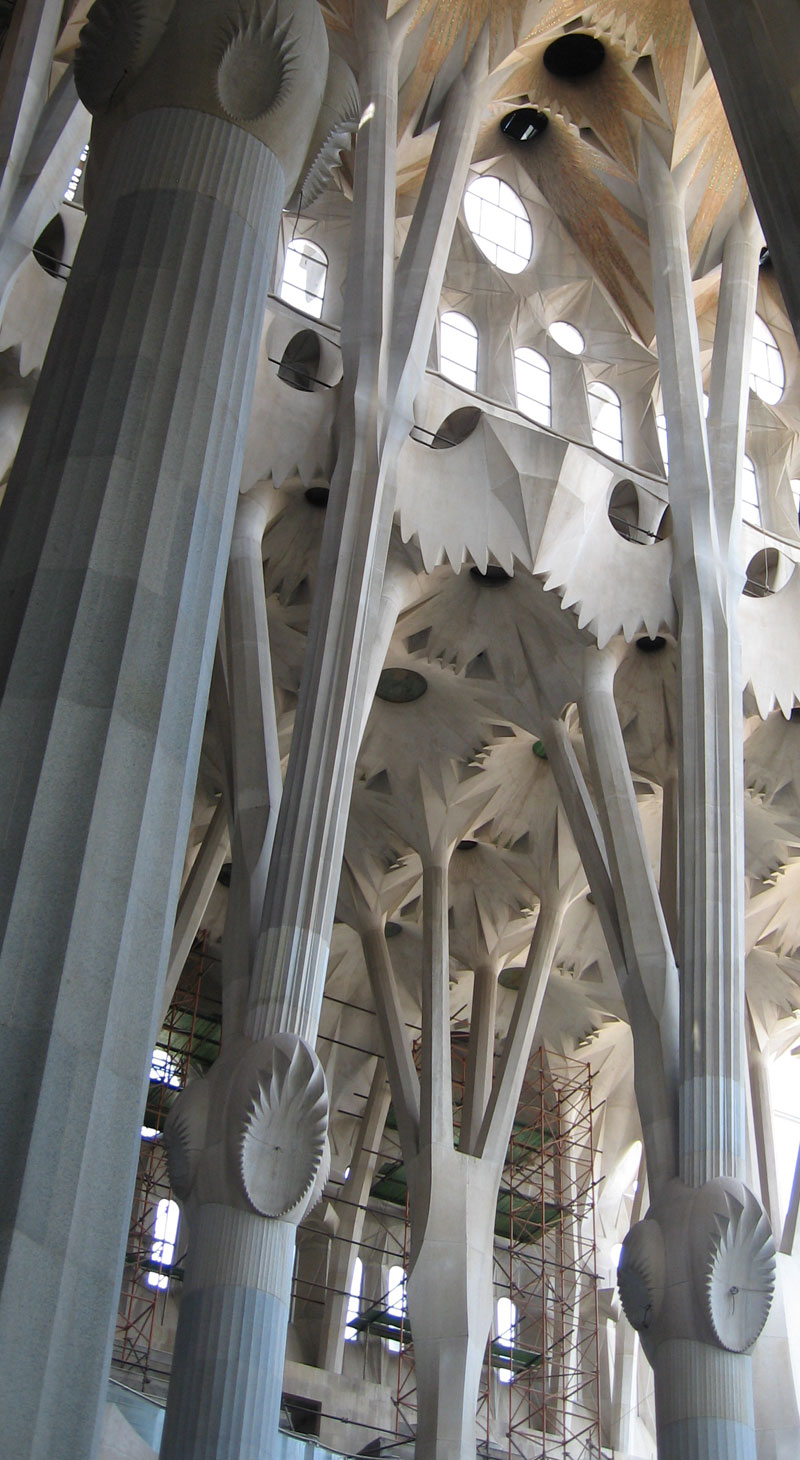 Every part of the design of La Sagrada Família is rich with Christian symbolism, as Gaudí intended the church to be the “last great sanctuary of Christendom”. Its most striking aspect is its spindle-shaped towers. A total of 18 tall towers are called for, representing in ascending order of height the twelve Apostles, the four Evangelists, the Virgin Mary and, tallest of all, Jesus Christ. (According to the 2005 “Works Report” of the temple’s official website, drawings signed by Antoni Gaudí found recently in the Municipal Archives indicate that the tower of the Virgin was in fact intended by Gaudí to be shorter than those of the evangelists, and this is the design — which the Works
Every part of the design of La Sagrada Família is rich with Christian symbolism, as Gaudí intended the church to be the “last great sanctuary of Christendom”. Its most striking aspect is its spindle-shaped towers. A total of 18 tall towers are called for, representing in ascending order of height the twelve Apostles, the four Evangelists, the Virgin Mary and, tallest of all, Jesus Christ. (According to the 2005 “Works Report” of the temple’s official website, drawings signed by Antoni Gaudí found recently in the Municipal Archives indicate that the tower of the Virgin was in fact intended by Gaudí to be shorter than those of the evangelists, and this is the design — which the Works
.
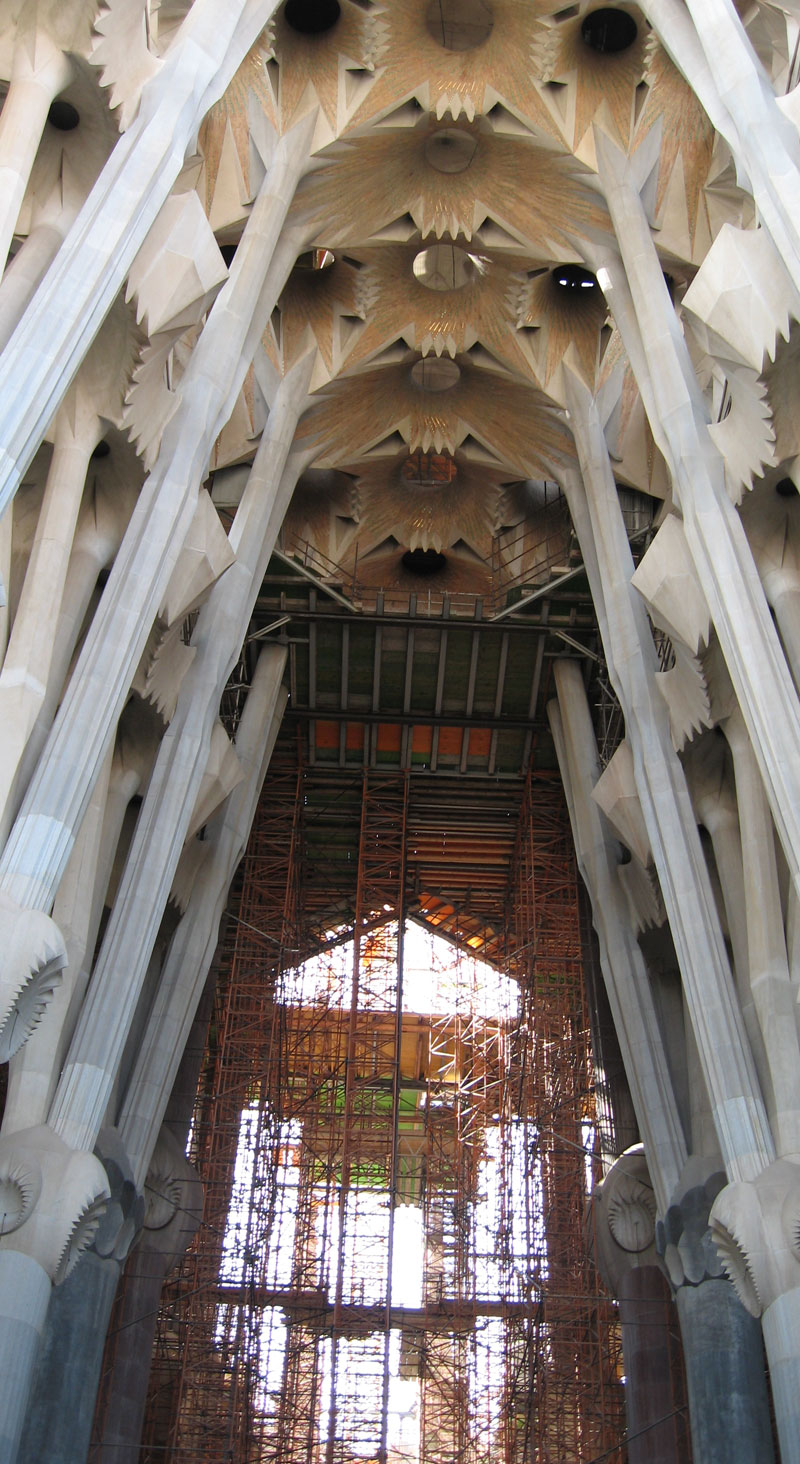 Report states is more compatible with the existing foundations — that will be followed. The same source explains the symbolism in terms of Christ being known through the Evangelists.) The Evangelists’ towers will be surmounted by sculptures of their traditional symbols: a bull (St Luke), an angel (St Matthew), an eagle (St John), and a lion (St Mark). The central tower of Jesus Christ is to be surmounted by a giant cross; the tower’s total height (170 m) will be one metre less than that of Montjuïc, as Gaudí believed that his work should not surpass that of God. Lower towers are surmounted by communion hosts with sheaves of wheat and chalices with bunches of grapes, representing the Eucharist.
Report states is more compatible with the existing foundations — that will be followed. The same source explains the symbolism in terms of Christ being known through the Evangelists.) The Evangelists’ towers will be surmounted by sculptures of their traditional symbols: a bull (St Luke), an angel (St Matthew), an eagle (St John), and a lion (St Mark). The central tower of Jesus Christ is to be surmounted by a giant cross; the tower’s total height (170 m) will be one metre less than that of Montjuïc, as Gaudí believed that his work should not surpass that of God. Lower towers are surmounted by communion hosts with sheaves of wheat and chalices with bunches of grapes, representing the Eucharist.
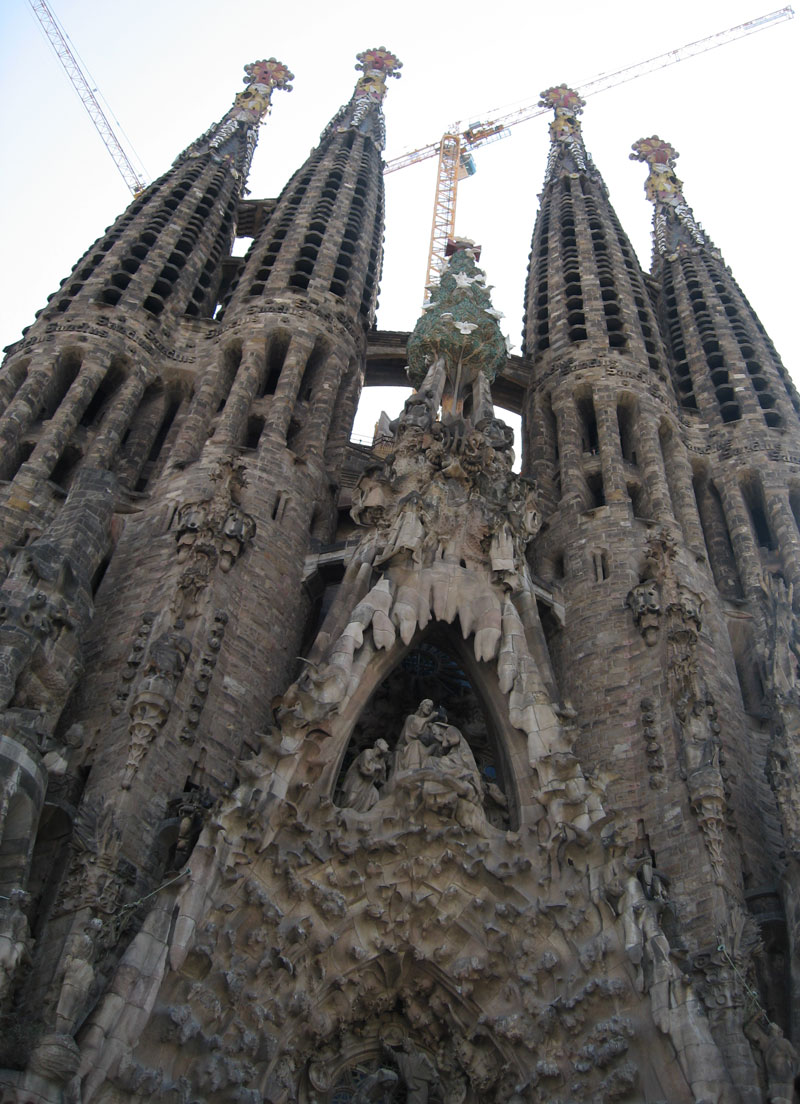 The church will have three grand façades: the Nativity (eastern) façade, the Glory façade (yet to be completed) and the Passion (western) façade. The Nativity facade was built before work was interrupted in 1935 and bears the most direct Gaudí influence. The Passion façade is especially striking for its spare, gaunt, tormented characters, including emaciated figures of Christ being flogged and on the crucifix. These controversial designs are the work of Josep Subirachs.
The church will have three grand façades: the Nativity (eastern) façade, the Glory façade (yet to be completed) and the Passion (western) façade. The Nativity facade was built before work was interrupted in 1935 and bears the most direct Gaudí influence. The Passion façade is especially striking for its spare, gaunt, tormented characters, including emaciated figures of Christ being flogged and on the crucifix. These controversial designs are the work of Josep Subirachs.
The towers on the Nativity façade are crowned with geometrically shaped tops that were probably influenced by Cubism (they were finished around 1930). The intricate decoration is loosely related to the style of Art Nouveau but reflects Gaudí’s unique ideas.
SOURCE : WIKIPEDIA
The Sagrada Familia Finished in 3D
The Sagrada Familia cathedral finished… A dream come true.
Finally you can watch the astonishing beauty and perfectness of Antoni Gaudi’s masterpiece when completed. We will have to wait until 2020 approximately to see it live. The hard work will certainly pay off. It’s worth to see indeed.
Just look at the inside of the church. When it’s night, the small lights like stars, and when it’s day, you see the light come in a explosion of colours like you’re in a forest.
